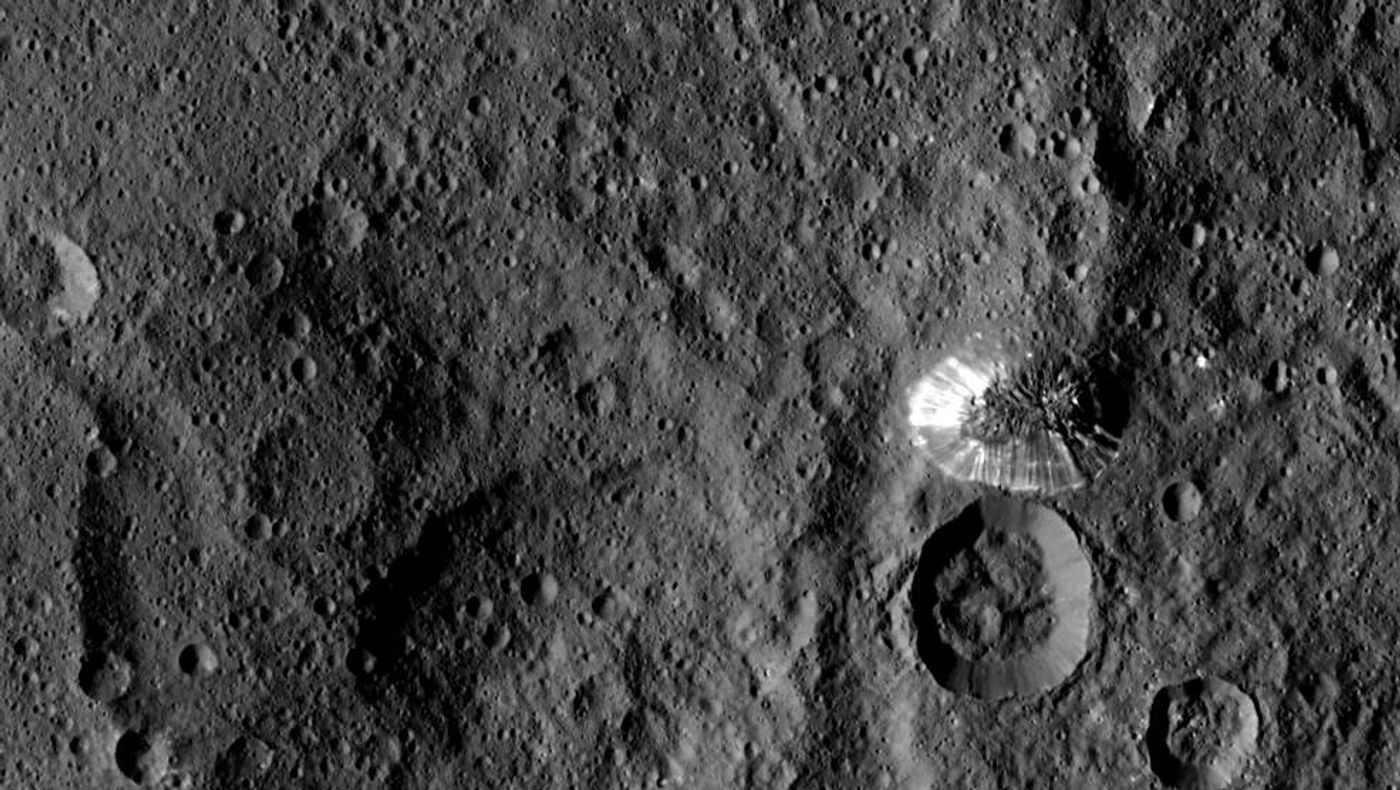NASA's Dawn Spacecraft Snaps HD Pictures of Conical Mountain on Ceres
NASA is closely watching the dwarf planet of Ceres, which is the largest object in the asteroid belt between the planets of Mars and Jupiter. Ceres is about 587 miles in diameter, which is about one-third the size of Pluto.
NASA’s Dawn spacecraft is one of the things the United States space and astronomy firm is using to monitor Ceres, and the most recent images that Dawn is sending back to Earth is exciting astronomers.
The image shows a close-up of a large conical mountain that is about 4 miles high and has very steep edges.
It’s a part of a series of images that Dawn will be acquiring during the mission. The plan is to map out as much of the surface of Ceres as possible in both 2D and 3D within the next two months.
"Dawn is performing flawlessly in this new orbit as it conducts its ambitious exploration. The spacecraft's view is now three times as sharp as in its previous mapping orbit, revealing exciting new details of this intriguing dwarf planet," said Marc Rayman, Dawn's chief engineer and mission director, based at NASA's Jet Propulsion Laboratory, Pasadena, California.
Dawn is not only snapping pictures, but it’s collecting data so that scientists can learn what the mineral composition of Ceres’ surface is composed of. This information can provide clues about the formation of our solar system, as well as shed light on the constant search for life.
Since this is the first mission to visit a Dwarf planet, there are a lot of things NASA scientists want to do. Dawn is also the first spacecraft to ever visit two solar system targets, which means Dawn is setting records all over the place.
There will be more to come as Dawn continues to probe the planet and snap pictures.
Source: NASA









